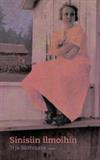A Short History of Nearly Everything
Registered by  GoryDetails
GoryDetails of Nashua, New Hampshire USA on 12/10/2018
of Nashua, New Hampshire USA on 12/10/2018
 This book is in a Controlled Release!
This book is in a Controlled Release!
 GoryDetails
GoryDetails of Nashua, New Hampshire USA on 12/10/2018
of Nashua, New Hampshire USA on 12/10/2018 This book is in a Controlled Release!
This book is in a Controlled Release!
1 journaler for this copy...
I found this slightly-battered softcover at Annie's Book Stop, and nabbed it for another release copy.
I first "read" this book via audio, but found it just as much fun to read as it was to listen to - and a surprisingly quick read it was, despite its bulk. (A feature of having the book in hand instead of "in ear": I could dart to the computer and Google for info on some of the more fascinating [or, I admit, more unbelievable] items that Bryson recounts; it was a gas to find portraits of some of the principal players in this long, convoluted drama!)
The book begins with Bryson describing his childhood fascination with a textbook illustration of the Earth with a huge section removed to show the layers of the crust and the molten core. He notes that while the picture was riveting, the book itself didn't explain why the core was molten, why our feet didn't get hot standing on the ground, or how scientists figured any of this out - and for a long time all the other science books he encountered suffered the same lack.
Bryson's goal, then, is to see if today's experts have the answers to a wide assortment of "how did we get here?" and "where is 'here' exactly?"-type questions. "The idea was to see if it isn't possible to understand and appreciate - marvel at, enjoy even - the wonder and accomplishments of science at a level that isn't too technical or demanding, but isn't entirely superficial either."
I should say here that I admire Bryson for even considering the questions; for some reason, while I adore learning about new things, I very seldom find myself asking the basic questions. It would never have occurred to me to wonder whether ocean salinity was changing, or why the Earth's core is molten, or what would happen if these states of affairs were different. I just took it all as given - which, since we can't really change it, may be a practical view; but, by not asking the question at all, I deprived myself of knowing which things could be changed and which couldn't, never mind a lot of interesting anecdotes along the way.
Bryson ranges from (literally) astronomical facts-and-figures to specific accounts of individuals, and blends these in his best style. One of the first people we meet is the unique Reverend Evans, a semi-retired Australian minister who appears to be a savant at spotting supernovas: "Evans's is a talent so exceptional that Oliver Sacks, in An Anthropologist on Mars, devotes a passage to him in a chapter on autistic savants - quickly adding that 'there is no suggestion that he is autistic.' Evans, who has not met Sacks, laughs at the suggestion that he might be either autistic or a savant, but he is powerless to explain quite where his talent comes from."
Another chapter mentions the transit of Venus, in its role in helping determine the distance from the Earth to the sun; since these transits only come along a couple of times a century - and since one occurred just this year - I found this especially interesting. The mishaps of some of the scientists who traveled to far points of the earth to measure the 1761 transit are many and varied, and (in a schadenfreude kind of way) very funny, especially the hapless Guillaume le Gentil. He wound up being unable to measure the 1761 transit because he was delayed at sea, so decided to set up shop and wait 8 years for the next one - only to have that viewing obscured by clouds. After an illness and a long voyage home, he found that during his 11 years away he'd been declared dead - talk about getting no respect, poor guy!
Later still, when the discussion turns to dinosaurs, Bryson digs up [sorry] the tale of Richard Owen and his apparent determination to make a living hell of the existence of rival paleontologist Gideon Mantell. If nobody's writing a screenplay for this they're missing a bet - drama, backstabbing, AND dinosaurs!
Another scientists of whose existence I'd been ignorant before reading this book was Swedish chemist Karl Scheele, who discovered no fewer than eight elements during his work in the late 1700s - but got credit for none of them. Further, his scientific method included tasting a little of whatever he was working on, such that "in 1786, aged just forty-three, he was found dead at his workbench surrounded by an array of toxic chemicals, any one of which could have accounted for the stunned and terminal look on his face."
I did catch Bryson out in one fact, at least: in the chapter on the great caldera that underlies - and contains - Yellowstone Park, Bryson mentions a recent incident in which three park employees, out for a night-time swim, jumped over what they thought was a narrow stream - and landed in a near-boiling thermal pool instead. Bryson states that none survived, but in fact two of the three did, although they were in critical condition and had to spend months in the hospital. His point is still valid, though; the whole park sits on top of the most thermally and geologically active spots on the continent, and possibly in the world, and is not to be taken for granted.
I first "read" this book via audio, but found it just as much fun to read as it was to listen to - and a surprisingly quick read it was, despite its bulk. (A feature of having the book in hand instead of "in ear": I could dart to the computer and Google for info on some of the more fascinating [or, I admit, more unbelievable] items that Bryson recounts; it was a gas to find portraits of some of the principal players in this long, convoluted drama!)
The book begins with Bryson describing his childhood fascination with a textbook illustration of the Earth with a huge section removed to show the layers of the crust and the molten core. He notes that while the picture was riveting, the book itself didn't explain why the core was molten, why our feet didn't get hot standing on the ground, or how scientists figured any of this out - and for a long time all the other science books he encountered suffered the same lack.
"Then much later - about four or five years ago - I was on a long flight across the Pacific, staring idly out the window at moonlit ocean, when it occurred to me with a certain uncomfortable forcefulness that I didn't know the first thing about the only planet I was ever going to live on. I had no idea, for example, why the oceans were salty but the Great Lakes weren't. Didn't have the faintest idea. I didn't know if the oceans were growing more salty with time or less, and whether ocean salinity levels was something I should be concerned about or not. (I am very pleased to tell you that until the late 1970s scientists didn't know the answers to these questions either. They just didn't talk about it very audibly.)"
Bryson's goal, then, is to see if today's experts have the answers to a wide assortment of "how did we get here?" and "where is 'here' exactly?"-type questions. "The idea was to see if it isn't possible to understand and appreciate - marvel at, enjoy even - the wonder and accomplishments of science at a level that isn't too technical or demanding, but isn't entirely superficial either."
I should say here that I admire Bryson for even considering the questions; for some reason, while I adore learning about new things, I very seldom find myself asking the basic questions. It would never have occurred to me to wonder whether ocean salinity was changing, or why the Earth's core is molten, or what would happen if these states of affairs were different. I just took it all as given - which, since we can't really change it, may be a practical view; but, by not asking the question at all, I deprived myself of knowing which things could be changed and which couldn't, never mind a lot of interesting anecdotes along the way.
Bryson ranges from (literally) astronomical facts-and-figures to specific accounts of individuals, and blends these in his best style. One of the first people we meet is the unique Reverend Evans, a semi-retired Australian minister who appears to be a savant at spotting supernovas: "Evans's is a talent so exceptional that Oliver Sacks, in An Anthropologist on Mars, devotes a passage to him in a chapter on autistic savants - quickly adding that 'there is no suggestion that he is autistic.' Evans, who has not met Sacks, laughs at the suggestion that he might be either autistic or a savant, but he is powerless to explain quite where his talent comes from."
Another chapter mentions the transit of Venus, in its role in helping determine the distance from the Earth to the sun; since these transits only come along a couple of times a century - and since one occurred just this year - I found this especially interesting. The mishaps of some of the scientists who traveled to far points of the earth to measure the 1761 transit are many and varied, and (in a schadenfreude kind of way) very funny, especially the hapless Guillaume le Gentil. He wound up being unable to measure the 1761 transit because he was delayed at sea, so decided to set up shop and wait 8 years for the next one - only to have that viewing obscured by clouds. After an illness and a long voyage home, he found that during his 11 years away he'd been declared dead - talk about getting no respect, poor guy!
Later still, when the discussion turns to dinosaurs, Bryson digs up [sorry] the tale of Richard Owen and his apparent determination to make a living hell of the existence of rival paleontologist Gideon Mantell. If nobody's writing a screenplay for this they're missing a bet - drama, backstabbing, AND dinosaurs!
Another scientists of whose existence I'd been ignorant before reading this book was Swedish chemist Karl Scheele, who discovered no fewer than eight elements during his work in the late 1700s - but got credit for none of them. Further, his scientific method included tasting a little of whatever he was working on, such that "in 1786, aged just forty-three, he was found dead at his workbench surrounded by an array of toxic chemicals, any one of which could have accounted for the stunned and terminal look on his face."
I did catch Bryson out in one fact, at least: in the chapter on the great caldera that underlies - and contains - Yellowstone Park, Bryson mentions a recent incident in which three park employees, out for a night-time swim, jumped over what they thought was a narrow stream - and landed in a near-boiling thermal pool instead. Bryson states that none survived, but in fact two of the three did, although they were in critical condition and had to spend months in the hospital. His point is still valid, though; the whole park sits on top of the most thermally and geologically active spots on the continent, and possibly in the world, and is not to be taken for granted.
I took this book to the holiday book-swap at the monthly book-group at the Book Cellar. Enjoy!
*** Released for the 2018 What's In A Name release challenge, for the embedded "Earl" and "Eve" in the title. ***
*** Released for the 2018 What's In A Name release challenge, for the embedded "Earl" and "Eve" in the title. ***







